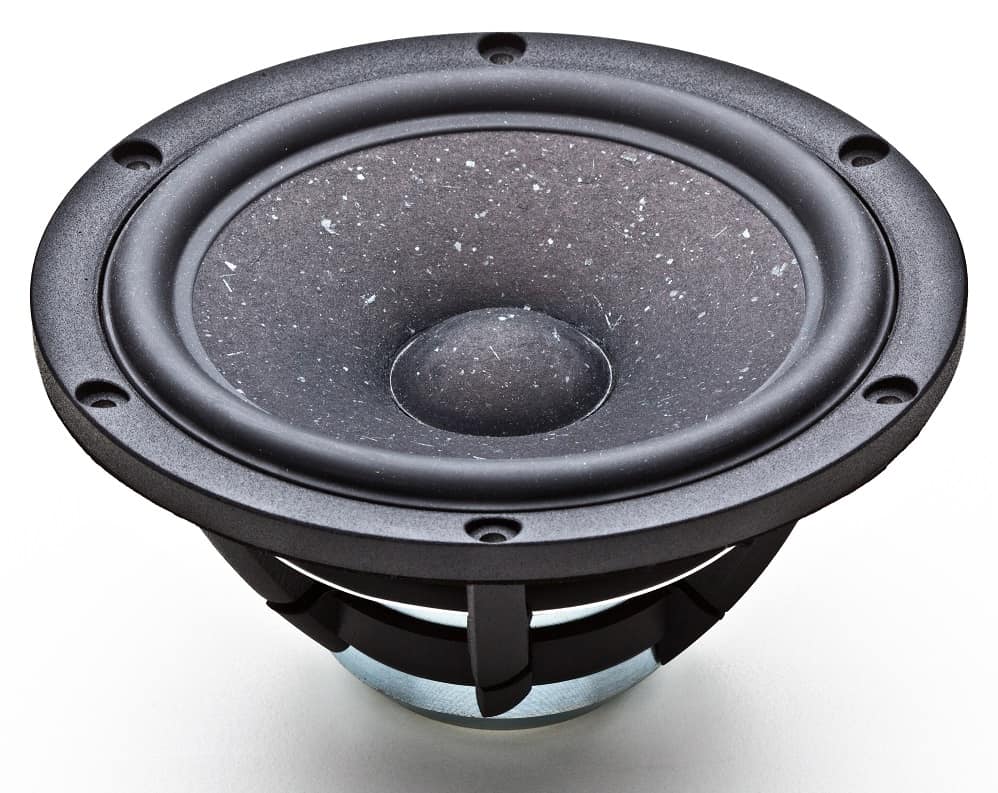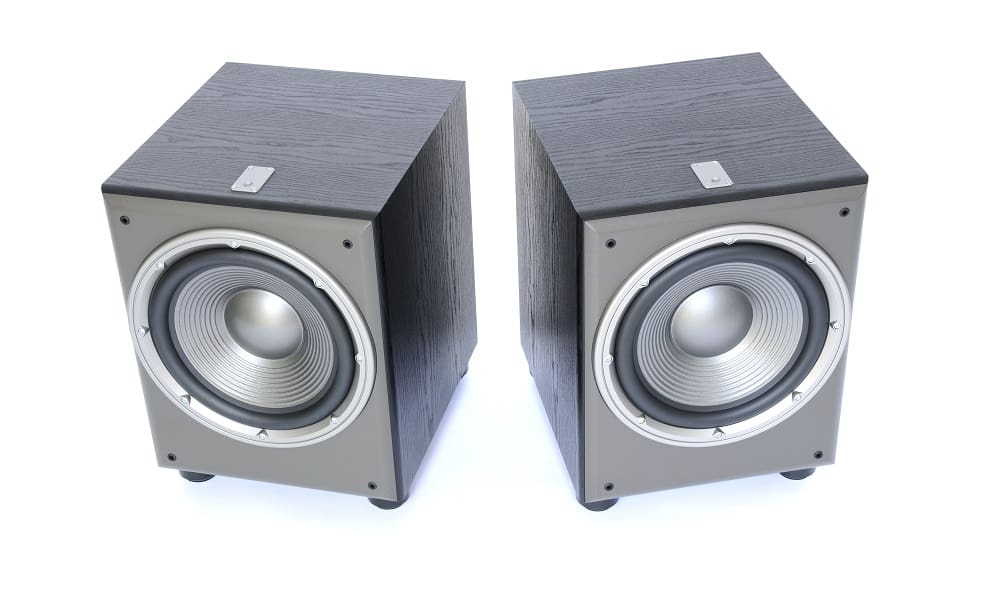Woofers are speakers that work independently to produce sound within the lowest frequencies – bass.
Subwoofers are more specialized speakers that focus on a much narrower audio range within the lowest parameters of the woofer's frequency.
When combined, they provide balanced, and rich depth of sound, a must for all home theater owners.

As you might expect, the name woofer is derived from the bassy, earthy tones of a dog's bark.
Woofers are simply loudspeakers that convert an electrical audio signal into sound.
They use a magnetic field to vibrate a flexible diaphragm quickly to produce sound waves.
They are typically conical or dome-shaped, but manufacturers might favor different designs. They are made from fabric, paper, or plastic.
The larger the surface area of the diaphragm, the longer the current takes to make its repetitive return journeys, thus creating low-frequency sound.
For this reason, woofers are bigger speakers than most other types.
Speakers are categorized by the range of sound they emit, measured in Hertz (hz). The greater the number, the higher the frequency and therefore, the sound's pitch.
Woofers put out the bass tones in the low-frequency ranges of 20Hz – 2000Hz.
They are most common as one component of a single speaker, combined with others to produce a sound that covers all frequencies accessible to the human ear.
Subwoofers are specialized speakers that concentrate on a narrow low-frequency range of 20Hz-200Hz.
Discussed in greater detail further in the article.
These speakers cover a huge range of frequencies, from 200Hz through 5kHz. With such a wide variation, the speaker typically reacts very well between the standard range of 500Hz – 2kHz, but a marked deterioration is noticeable at either end of these parameters.
Instead of a conical diaphragm, rotary woofers have a set of fans. Coil motion and power from the audio amplifier combine, adjusting the pitch of the fan blades; creating sound waves. They require far less power than conventional woofers and subwoofers.
They are capable of producing sound from 0 – 20Hz, lower than the human ear can detect.
Woofers, mid-range, and tweeters are speakers often found individually mounted in a box. When combined in an enclosure, their combined frequencies cover most of the human audio range.
Woofers and tweeters together are called 2-way speakers and cover a wide range of the highest and lowest frequency sounds.
A combination of a woofer, tweeter, and mid-range driver in one enclosure is called a 3-way speaker and provides an excellent overall listening experience as all frequencies are covered.

Just like woofers, subwoofers are loudspeakers and work in the same ways. They produce a low-frequency sound that augments and extends the bass output of a full-range speaker system.
Subwoofer means 'below the woofer' – the best devices extend the low-frequency response to below 20Hz.
Passive subwoofers comprise a woofer or multiple woofers in a single enclosure, driven by the power from an external amplifier.
In some set-ups, the same stereo amplifier drives not only the main speakers but also the sub. This system often results in the deterioration of low-frequency signals and affects sound quality.
A better method is to use a separate power amplifier; it is less harmful to the signal and increases the system's dynamic range.
An active system is a self-contained unit comprising a subwoofer, crossover, and a power amplifier. They are space-saving and power-efficient as they eliminate the need for additional boxes and amplifiers.
The frequency level is adjustable; the user can set it to the level that integrates best with the main speakers.
Although the operating methods of both types of speaker are the same, they differ in other ways:
In any home movie theater, a good viewing experience is boosted by excellent audio quality; enabled only when all frequencies are balanced and in harmony.
Every sound system with more than two speakers should contain at least one woofer. A subwoofer further complements the set-up, ensuring it produces the most bass-filled tones.
Woofers can work independently; the specific low-frequency range of a subwoofer means it only works in conjunction with a woofer.
A sound system should reproduce every audible frequency for the best movie viewing and listening experience.
For instance, baby cries are high pitched, and for accurate effect, should be heard through a tweeter – a speaker that plays sound in the highest-frequencies.
Human speech falls into the mid-range bracket covered by a 2-way speaker containing woofers and tweeters.
Subwoofers emit rich depth of sound; without one, you might not hear the wind's movement or know the direction that it's blowing. While that might not seem a big issue, imagine watching a horror film and not hearing the deepest, spookiest sounds.
The noise from explosions and eruptions also falls into very low frequencies. Subwoofers reproduce the sound immaculately, giving the viewer an accurate sense of how big, near, or far away the noise occurs.

Woofers are built in big wooden or plastic cases for a reason; the larger the surface area of the diaphragm, the lower the frequency it produces.
Subwoofers are usually encased in larger boxes; the increased air volume within supplies high-pressure when a current passes through it.
Woofers can derive power from a pre-amp or amplifier; subwoofers need much more power and should have an independent electricity source. Low-frequency sounds have longer wavelengths which require greater power to move the air.
There is no either-or when setting up the best sound system in a home movie theater; woofers and subwoofers are vital components.
A sound system plays back sound on a series of channels (speakers) The most common styles are 5:1 or 7:1; the first contains 6-speakers, the latter has 8-speakers in total. The second number in the ratio denotes the number of subwoofers in the system that can connect to a receiver.
A series of normal 2 and 3-way speakers are not capable of reproducing full-range frequency. An additional subwoofer provides depth to ensure the listener doesn't miss out on some vital sound.
A complete system, including a subwoofer, ensures immaculate audio experience.
Bass waves are longer than higher frequency sound waves, and as such, they travel in peaks and troughs.
A second subwoofer balances out the sound by filling in each dip; It evens out the bass notes on the lower register.
Subwoofers complement the range of a woofer to ensure true depth of sound and offer the viewer a fully immersive experience.
While woofers in a sound system are neatly packaged in a tidy box, subwoofers are often thought of as large, cumbersome pieces of equipment.
Happily, as technology advances, amplifiers have become enabled to power scaled-down models that blend well with the rest of the system.
